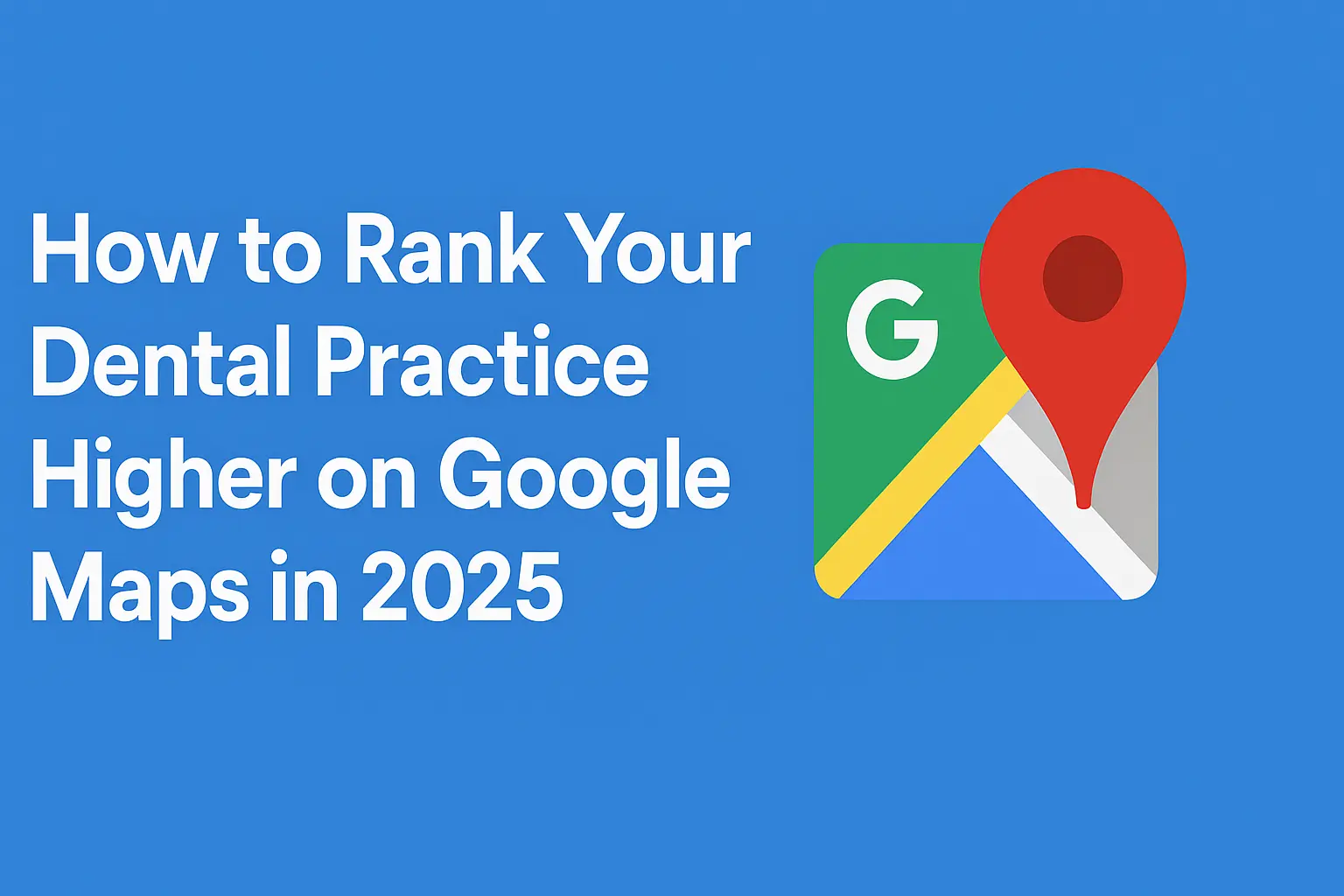How to Rank Your Dental Practice Higher on Google Maps in 2025
JUNE 23, 2025 | AMMAR KHAWAJA, SEO SPECIALIST

Key Points
Lock down an optimized Google Business Profile and perfectly matched NAP (Name, Address, Phone) citations to cement relevance and trust with Google.
Amplify authority by pairing fast, schema-rich service pages with a steady flow of genuine local reviews and backlinks.
Use tools to geo-grid rankings and site health, fixing issues fast to boost rapport and preserve rankings.
Patients no longer flip through insurance booklets or ask neighbors for referrals; they open Google Maps, glance at the top three results, and inquire into those. Getting your dental practice into that local “three‑pack” boosts patient inquiries tremendously, which is why dental practices aim for it so much. Below is a blueprint to push your practice into that prime spot and keep it there.
-
Perfect Your Google Business Profile
Google Business Profile (GBP) is your online front‑door and usually the first impression patients get. Make it thorough and accurate:
- Pick “Dentist” as the primary category, then add secondaries like “Pediatric Dentist,” “Cosmetic Dentist,” or “Implant Dentist.”
- Fill the Services field with precise procedures (e.g., “Invisalign,” “Cleanings”) to reinforce relevance.
- Post real photos of the doctor, team, operations, and office every week.
Publish a short Google Post about once a week to show Google that your practice is active and fresh.
-
Lock Down NAP (Name, Address, Phone) Consistency
Google cross‑checks your NAP on hundreds of sites. Inconsistencies lower trust and drag down your ranking on Google Maps.
- Audit with BrightLocal or Moz Local and fix mismatches on data aggregators like Data Axle, Neustar, and Foursquare.
- Skip quantity for quality; ten authoritative, perfectly matched citations beat fifty spammy ones.
Need the basics first? Check our quick guide: Boost Your Dental SEO Today: 3 Quick Fixes.
-
Use Website SEO to Power Map Visibility
Your website feeds authority into Maps. A slow, thin, or absent site will cap your Google Maps ranking no matter how optimized your GBP looks.
- Build one optimized landing page per high‑value service per city (700‑900 words, unique H1, FAQs, and proper schema).
- Implement
Organization,LocalBusiness, andServiceschema; include geo‑coordinates and social profiles. - Crush mobile Core Web Vitals—most map searches happen on phones.
- Link internally with descriptive anchors (e.g., “Fairfax emergency dentist”) that match search intent without stuffing.
- Strengthen EEAT: showcase credentials, link to authoritative sources, use real photos, and secure the site with HTTPS.
Want a deep dive? Read our Advanced Dental SEO Tips.
-
Collect Reviews with Purpose
Reviews influence roughly one‑sixth of the local algorithm and heavily sway patient choice.
- Aim for a 4.5‑plus average rating; address unhappy patients offline before inviting feedback.
- Maintain a steady drip of 8‑12 new reviews per month via automated SMS, email, or in‑person encouragement.
- Encourage reviewers to mention the treatment and city (“root canal in Oakland”).
- Respond to every review within 72 hours using HIPAA‑compliant language.
Never gate reviews or buy fake ones; suspensions are brutal and getting more common in 2025.
-
Build Local Backlink Authority
Backlinks from websites that share your zipcode boost Map rankings faster than generic links.
- Contribute articles to local health blogs or news sites on topics like “How Bethesda’s fluoride levels affect cavity risk.”
- Issue press releases when you add new tech or host charity drives; local outlets still grant links.
- Publish small research pieces—survey 300 patients on whitening habits—and pitch them to city journalists.
- Inside your own content, link every blog article back to its parent service page to funnel authority.
For example, we have Dental Rank SEO featured on DesignRush. This gives us a reputable backlink and gives them more content on their site; a win-win for both of us.
-
Embed Location Signals into Every Channel
Drop location clues everywhere you can:
- Show your full name, address, and phone on every page and in your site’s schema code.
- Geo‑tag images and YouTube uploads; Google parses EXIF and meta‑data.
- Ask patients to tag your office on Instagram or Facebook; those social geo‑tags help Google connect the dots.
-
Track, Test, Iterate
What you measure, you can improve.
- Separate Map traffic in GA4 using UTM tags.
- Run monthly geo‑grid scans with LocalFalcon to visualize rankings every mile around your office.
- Use dynamic call‑tracking numbers that swap only on the website, preserving NAP consistency.
- Perform quarterly audits of citations, Core Web Vitals, schema, and review sentiment.
Confused? Our team at Dental Rank SEO can handle the heavy lifting—book a free audit today.
-
Avoid Common Pitfalls
A few shortcuts can ruin months of work:
- Duplicate blogs or listings split authority—merge or suppress them.
- Stuffing keywords into the business name (“Best Cosmetic Dentist Miami”) violates guidelines—suspensions are swift.
- Buying reviews, fake traffic, or low‑quality links can trigger manual actions that wipe you from the Map pack.
Take Action Now
Google Maps success rests on three pillars: relevance, proximity, and prominence. Polish your GBP, match citations, and embed your location everywhere; these simple steps boost your visibility fast.
Layer in consistent reviews and genuine local backlinks, and you will climb the Map list, getting in front of patients before competitors do.